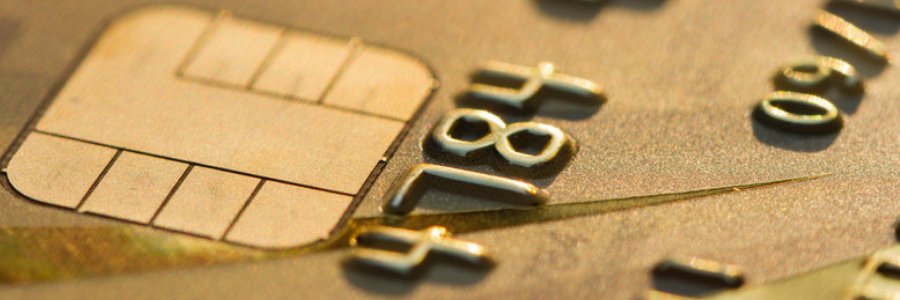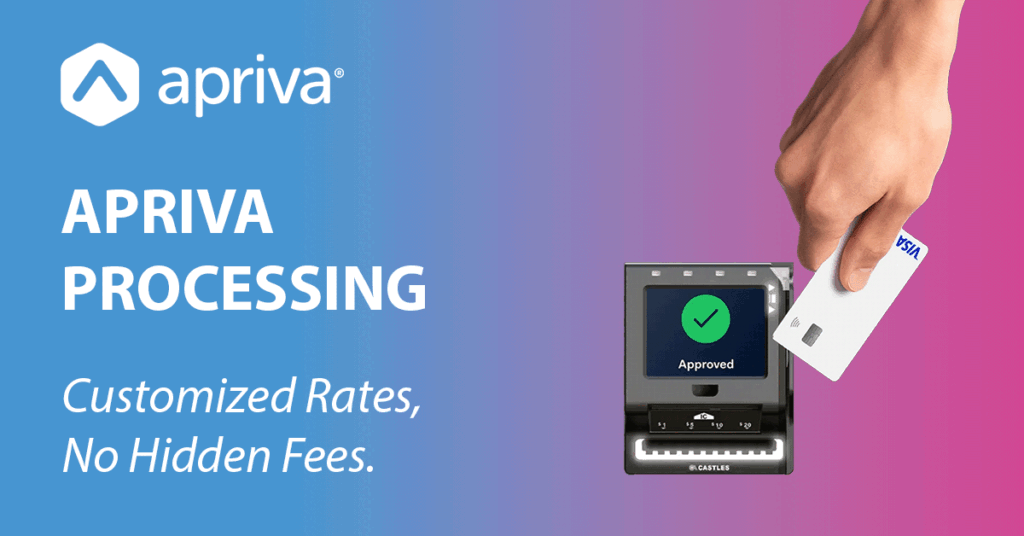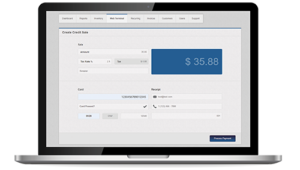Note: this article appears on the Kiosk Industry website here.
When a merchant wants to accept payments through their unattended kiosk, they are faced with many processing choices and industry complexities. Whether forming multiple direct integrations to processors or utilizing one-to-many processing solutions provided by middleware or gateways, kiosk operators and merchants have a lot to consider.
A payment integration to a gateway or processor can require a great deal of time and resources. Kiosk operators also need to assess ongoing remote maintenance and how to support multiple integrations. In addition, there are various industry, regulatory and compliance requirements (like EMV and PCI DSS) to follow, as well as value-added security features such as end-to-end encryption or tokenization for recurring payments to consider. The payment process and user interface must attract and retain the customer through the entire payment process. As most kiosk users are untrained, transaction abandonment is common with a slow or cumbersome user interface.
This whitepaper will evaluate the benefits and costs of integrating payments via a gateway versus via direct processor connections, plus explore the other potential value points a gateway partner can provide kiosk operators and merchants.
Gateways and Payment Processors Defined
With the payment landscape growing more complex every year, merchants are seeking more sophisticated technologies to help them accept diverse forms of payment and integrate payment data with their other systems, such as inventory management, accounting and more. Kiosk operators need systems designed for ease of use, speed and security, and payment gateways and payment processors are two of the most widely used solutions for payment acceptance.
A gateway is essentially a secure cloud-based platform that connects credit card payments from merchant points of sale (POS) to their processors, thereby facilitating the authorization and settlement of payment transactions. Why have a gateway in the middle of this important relationship? The short answer is for security and flexibility, but the details and other benefits will be expanded below.
A payment processor is a company (often a third party) appointed by a merchant to handle transactions from various channels, such as credit cards and debit cards for merchant acquiring banks. They are usually two types: front-end and back-end processors. Front-end processors have connections to various card associations and supply authorization and settlement services to merchants. Back-end processors accept settlements from front-end processors and move money from issuing bank to the merchant bank.
Pros and Cons of Leveraging a Gateway
Gateways provide several benefits to kiosk operators that are integrating payments into their offerings:
- A single connection to a gateway leverages that gateway’s multiple connections to many processors, enabling kiosk operators to have more freedom to choose their processor partners and accommodate a broader customer base with very different payment needs. Connecting once to access multiple payment processors is much more cost-effective and efficient than creating multiple direct processor connections.
- Access to the gateway provider’s reseller base, which gives kiosk operators connections to potential channel partners and greatly increases growth opportunities.
- PCI DSS compliance of each processor connection, securely routing card data from the POS system to the processor of choice—again all delivered via the single connection to the gateway.
- Access to PCI scope-reduction tools, like end-to-end encryption, EMV and tokenization, which limit the kiosk operator’s exposure to handling sensitive card data and potential fraud.
- Lower upkeep and maintenance costs due to the fact that the gateway provider handles the bi-annual card brand releases and enhancements required by card brands and processors.
The price of leveraging these gateway benefits is typically a gateway transaction fee—an expense in addition to the interchange fees charged by processors. While the gateway fee is typically nominal, the expense can add up over time as transaction volumes grow.
Pros and Cons of Direct Connections
The main benefit of direct connections is that they eliminate incremental transaction fees typically associated with gateways, because direct processor connections cut out the “middle man” with a select processor.
However, there are additional costs in both funds and time accompanying direct processor connections:
- Merchant have fewer choices for payment processors—typically only the one processor is directly connected.
- Kiosk operators are personally responsible for PCI compliance, which is an ongoing and labor-intensive process. Even when using a PCI DSS-compliant level one service provider, the kiosk operator will still need to adhere to any applicable PSI DSS obligations set forth by their acquirer, based on processing environment, volume of transactions and policies/procedures.
- It takes a substantial amount of work (and, therefore, cost) to certify and maintain each individual connection, comply with PCI data security standards, and perform necessary updates for card brand and processor bi-annual releases. This can result in a very expensive, time-consuming and resource-intensive effort for kiosk operators who wish to handle payments processing development themselves.
Integrating with direct connections and certifying EMV transactions for every chosen processor requires several steps, each of which can each take weeks or months to complete:
- Submitting and getting approval from the payment processors for an EMV Application Request
- Assigning a Certification Analyst and acquiring Magnetic Stripe Reader (MSR) Certification
- Completing pre-certification EMV Testing
- Completing subsequent EMV certification with individual card brands (These certifications are device- and processor-specific, and separate for Visa, MasterCard, Discover and AMEX)
Repeating this process for each connection is extremely costly to initiate and maintain. Kiosk operators must certify each desired hardware to each desired processor, and any alterations to the payment application requires a new EMV certificate.
EMV for Kiosk Operators
With the implementation of EMV cards in the U.S., kiosk merchants are seeing improved security for consumers and decreased fraud for merchants. With these benefits, come a few challenges, the first of which is that kiosks are usually unattended devices. Since the kiosks are not using a basic POS terminal, an original equipment manufacturer approved for unattended use is needed for Level 1 EMV compliance. Level 1 EMV compliance relates to the hardware housing the terminal, which must have a higher degree of security to prevent people from accessing the keys to the data. The next stage of EMV compliance (Level 2) refers to the software. Transactions happen between the POS device and bank exclusively, removing liability from the kiosk operator.
EMV compliance can be complicated and costly, but it marks a significant shift in liability in the U.S. Using a secure payment gateway can help to streamline this process for kiosk operators and remove the burden of securing EMV certifications for each payment type.
Other Benefits of Gateways for Kiosk Operators
While direct integration can be time-consuming and expensive, integrating with a gateway provides kiosk operators with several key benefits that reduce ongoing operational costs, labor and maintenance.
-
More Options and Flexibility
Gateways typically enable the ability to connect to more processors than direct connections so merchants have the freedom to choose the partners that work best for their business. The more connections and channel partners that your gateway provider offers, the more flexible payment options that are available for kiosk merchants. With customer analytics growing quickly, kiosk merchants can provide a customized experience for their users, including user recognition through card number, email address and more.
-
Top-Notch Security
Be sure to select a gateway provider that has a reputation for top-notch safety and security. Features to look for include advanced security features like end-to-end encryption, tokenization and hosted payment screens, in addition to EMV compliance for a comprehensive layered security approach.
-
Industry-Specific Solutions
Gateway technology can be tailored for a variety of niche markets like vending, parking, car washes, golf courses, and ticketing, plus a wide array of traditional payments terminals, so look for a provider that meets your specific vertical market needs.
-
Semi-Integrated Solutions to Save Time and Effort
Semi-integrated solutions allow kiosk operators to add EMV support quickly and easily using their existing payment solutions, saving significant time, effort and resources. EMV reduces the liability for kiosk merchants, shifting more liability to the cardholder’s bank, significantly reducing risk to the kiosk merchant.
-
Increased Growth Potential
Gateway providers sometimes have a large reseller base. For those that do, granting kiosk operators access to the gateway’s reseller base gives those kiosk operators connections to potential channel partners, greatly increasing growth opportunities.
-
Speed & Service
Gateways should provide a consistent level of service to enhance the payment process for the customer. Speed of a transaction is especially important during heavy use. A slow system can drive customers away during the payment process and reduce the sales volume. Kiosks must be able to function well at a high volume without the system slowing or shutting down.
-
Dynamic Routing for Fast and Easy Payment Device Management
Gateways should feature dynamic routing across platforms and services, meaning devices are boarded once and can send transactions anywhere. This consolidates payments and data from different platforms into one simple, easy-to-use interface, and translates across reporting, risk management and billing for all devices, which dramatically reduces the work required to maintain these connections. As kiosk users are generally untrained, a fast, reliable experience is required to maintain current users and gain new users. Sales are often abandoned due to system delays or an interface that is not user friendly. Look for a gateway provider that allows acquired portfolios of devices to easily be added, and supports functions like recurring billing.
-
Preferred Rates
Some gateways can convey preferred rates for small-ticket Visa and MasterCard transactions, further validating the ROI of connecting to a gateway, especially for kiosk markets with lower average sales tickets.
-
Flexibility to Support New Technology
Gateway providers continually add support for new payments technologies as they emerge, which helps future-proof solutions and keep them compliant with updated PCI regulations. Ensuring the kiosk merchants can utilize the latest mobile options, such as Apple Pay, Wallet and more with a future-proof solution.
Which Integration Path is Right for You?
Establishing and maintaining individual connections with processors may seem more empowering and cost-effective at first glance, but it can be quite costly and resource-intensive over the long term. Many payments solution providers are turning to gateways to provide their merchants (and customers) with more options. However, each kiosk provider or merchant must weigh the pros and cons, and choose an integration path that works best for their business.
By Justin Passalaqua
Director of Sales at Apriva, LLC
jpassalaqua@newpayments.apriva.com
(480) 423-7724




